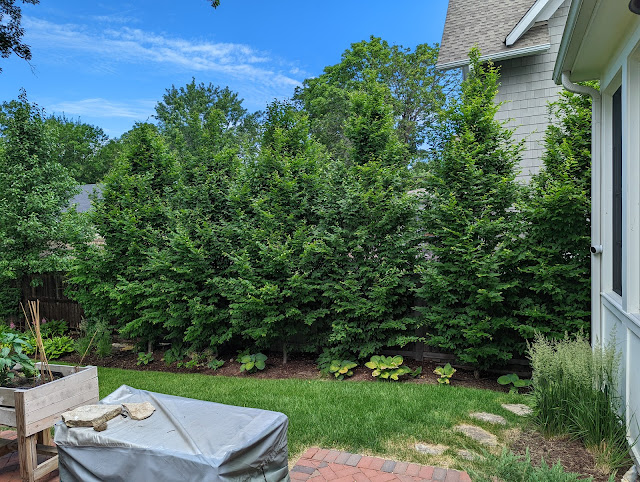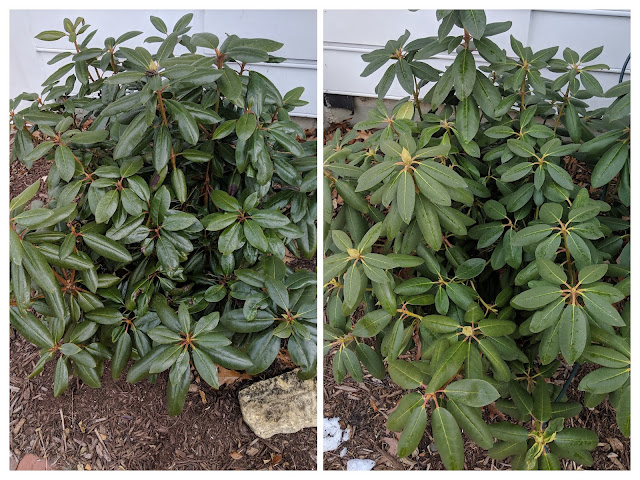Frans Fontaine Hornbeam Trees - Summer Screen in Landscape - July 2022

At the top of this post is a look at the row of Frans Fontaine Fastigiate Hornbeam trees that we planted back in 2018 along the northern border of our property. These trees were planted as a screen between our backyard, our screened porch and our neighbor's house. When we put them in, our neighbors to the norther were in a small ranch that was set pretty far back from the property line. A few years back, a new house was built and the screening was needed more than ever. [NOTE: If you are here reading about the really amazing Frans Fontaine Columnar Hornbeam Trees and want to know the full history we've had with planting a row of eight of them, you can head to this post from August of 2021 that includes links to their full history dating back to being planted in 2018. Alternatively, you can poke around at this [ Frans Fontaine ] post tag. Or start here with my post showing them being planted as 2" caliper trees in 2018.] The last time tha...

















